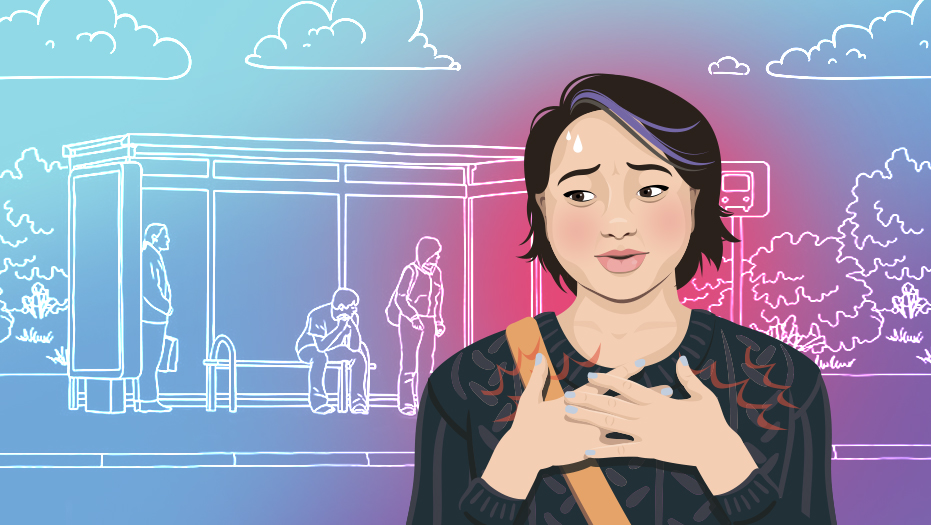 25th September 2023
25th September 2023
What is a panic attack, really?
Picture this – you're waiting at the bus stop after having a stressful day. You’re feeling on edge, and as soon as you step on to the crowded bus, you start to sweat, your heart beats faster, and you start to panic: “am I going to pass out? What’s happening to me? I need to get off the bus now!” You’ve just experienced what is known as a ‘panic attack.’
If this situation sounds familiar, you’re not alone. Panic attacks happen to lots of people - about 15% of us will have one at some time in their life. The good news is that panic attacks are common, harmless, and treatable.
Panic attacks can feel scary and overwhelming at the time, but by understanding what they are and what causes them, we can begin to overcome the ‘cycle of panic’ and get back to living our lives to the fullest. So, what is a panic attack?
Panic attacks explained
The term ‘panic attack’ describes a sudden surge of intense anxiety that peaks within minutes and then goes away – usually within an hour or so. The surge is caused by a hormone in our bodies called ‘adrenaline,’ which is released when the ‘fight, flight, or freeze’ response is triggered: a natural, automatic reaction that happens in our bodies when we feel stressed or in danger.
Fight, flight, or freeze?
To understand panic, first we have to look at what exactly the ‘fight, flight or freeze’ response is.
Let’s look at an example: imagine you’re surfing in the ocean on a sunny day. Everything is going well, until, out of the corner of your eye.. You spot a shark!
Your heart starts racing, you feel hyper-alert, and you swim back to shore as quickly as you can.
In this situation, your body has seen and identified a danger, activated your ‘fight, flight or freeze’ response, and pumped you full of adrenaline to give you the energy to escape to safety.
Adrenaline and the body
Adrenaline causes many temporary changes in our body. We may:
- Feel our heart beating faster or harder
- Over-breathe, or ‘hyperventilate’
- Feel our muscles become tense or shaky
- Sweat
- Have a stomach ache
As well as these uncomfortable body sensations, we also might start having anxious thoughts about what is happening, like “I'm going crazy, I'm dying, I'm losing control, I'm going to collapse, I'll going to throw up.”
Panic is normal
Even though panic attacks feel distressing in the moment, it’s important to remember that they aren’t dangerous or harmful. Anxiety and the ‘fight, flight, or freeze’ response won't hurt you, even if they feel intense, and that no one has ever died or “gone crazy” from a panic attack.
Anxiety is also a normal, and even helpful emotion – remember the example of the shark at the beach? If dangerous situations didn’t make us feel panicked, then we may not be able to quickly escape from them!
Overcoming the panic cycle
There are three important parts of the cycle of panic:
- The physical symptoms we experience – a racing heart, finding it hard to breathe, feeling dizzy, sweating, shakiness, and feeling sick
- The anxious thoughts about what might happen to us when we panic
- The behaviours we choose to do in response to having panic attacks.
The good news is that if we can shift the anxious thoughts about panic and the behaviors we do, we can disrupt the cycle of panic and get back to living our lives to the fullest.
If you’ve been struggling with anything we’ve talked about in this blog, we have two free, easy-to-use therapy courses designed to help you through the process of overcoming panic. Our courses are based on gold-standard Cognitive Behavioural Therapy, and can be taken any time, at your own pace.
Interested? Head over to our courses page to find out more and sign up for free.
